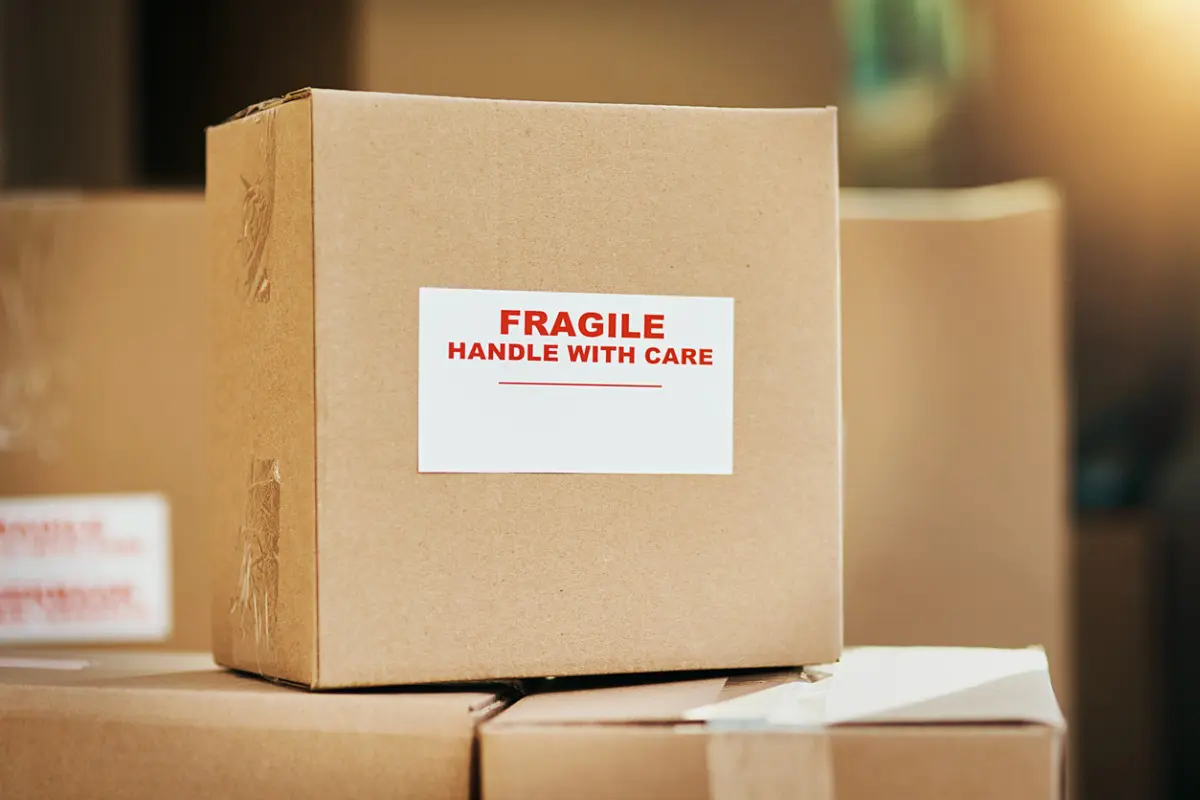How to Pack Fragile Items Like a Professional Packer

When it comes to moving, fragile items require special attention and care. Professional packers have mastered techniques that keep delicate belongings safe during transport. Whether you’re handling antique china, family heirlooms, or expensive electronics, these expert methods will help protect your most precious possessions.
Essential Packing Supplies for Fragile Items
Before you begin packing fragile items, gather the right materials. Quality packing supplies are crucial for proper protection:
- Bubble wrap: Various sizes for different items
- Packing paper: Clean newsprint or white packing paper
- Foam sheets: Extra cushioning for delicate surfaces
- Dish barrels: Double-walled boxes designed for fragile items
- Cell dividers: Individual compartments for glasses and stemware
- Packing tape: High-quality sealing tape
- Markers: For clear labeling
- Stretch wrap: Securing wrapped items
Pro Tip: Always use new, clean packing materials. Used materials may contain dirt or moisture that could damage your items during the move.
Step-by-Step Guide: Packing Dishes and Glassware
1. Prepare Your Dish Barrel
Start by cushioning the bottom of your dish barrel with 3-4 inches of crumpled packing paper. This creates a shock-absorbing base that professional packers always use.
2. Wrap Individual Plates
Place each plate in the center of a large sheet of packing paper. Bring one corner over the plate, then fold the sides over and roll. The goal is complete coverage with some extra paper for cushioning.
3. Pack Plates Vertically
Never stack plates flat in a box. Instead, pack them vertically like records in a crate. This distributes weight more evenly and reduces the risk of breakage during transport.
4. Handle Glassware with Extra Care
For glasses and stemware, wrap each piece individually in bubble wrap. Pay special attention to stems and handles, which are the most vulnerable parts. Use cell dividers or create individual compartments with cardboard.
Packing Electronics and Appliances
Electronics require special handling due to their sensitivity to shock and moisture. Here’s how professional packers protect your valuable devices:
Before Packing Electronics:
- Remove batteries to prevent corrosion
- Take photos of wire connections for easy setup
- Use original boxes when available
- Back up important data
Packing Process:
- Wrap the item in anti-static bubble wrap
- Place in a box with at least 2 inches of cushioning on all sides
- Fill empty spaces with packing peanuts or paper
- Seal and label clearly as “FRAGILE – ELECTRONICS”
Protecting Artwork and Mirrors
Artwork and mirrors require specialized packing techniques to prevent cracking and scratching:
For Paintings:
- Use acid-free tissue paper directly on the artwork
- Wrap in bubble wrap with bubbles facing away from the surface
- Create a cardboard sandwich for extra protection
- Mark “THIS SIDE UP” clearly on the package
For Mirrors:
- Apply masking tape in an “X” pattern across the glass
- Wrap in bubble wrap, then blankets for large mirrors
- Use mirror boxes or create a wooden crate for valuable pieces
- Transport upright, never flat
Common Mistakes to Avoid
Even with good intentions, many people make these critical errors when packing fragile items:
- Overpacking boxes: Heavy boxes are more likely to be dropped
- Using newspaper: Ink can transfer and stain items
- Inadequate cushioning: Items should not move when box is gently shaken
- Poor labeling: Always mark “FRAGILE” and “THIS SIDE UP”
- Mixing fragile with heavy items: Keep fragile items in separate boxes
Professional Packing Techniques
Here are advanced techniques that professional packers use to ensure maximum protection:
The “Bundle” Method
For items like dishes, wrap 3-4 pieces together after individual wrapping. This creates a stable bundle that’s easier to handle and provides mutual support.
Weight Distribution
Place heavier items at the bottom of boxes, but never exceed 50 pounds total weight. Use smaller boxes for heavy fragile items like books or ceramics.
The “Shake Test”
Before sealing any box, gently shake it. If you hear items moving, add more cushioning. Nothing should shift inside a properly packed box.
Loading and Transport Tips
Proper packing is only half the battle. Here’s how to handle fragile boxes during loading and transport:
- Load fragile boxes last and unload them first
- Keep fragile items upright and secure them from shifting
- Use blankets and straps to prevent movement during transport
- Avoid stacking heavy items on top of fragile boxes
- Consider climate control for temperature-sensitive items
When to Hire Professional Packers
While DIY packing can save money, consider hiring professional packers for:
- Valuable antiques or collectibles
- Large collections of fragile items
- Items with sentimental value that can’t be replaced
- Tight moving timelines
- Long-distance or international moves
Professional packing services often include insurance coverage, giving you additional peace of mind. According to the American Moving & Storage Association, professionally packed items have significantly lower damage rates.
Final Checklist for Packing Fragile Items
Before your move, ensure you’ve covered all bases:
- ✓ Gathered all necessary packing supplies
- ✓ Sorted items by fragility level
- ✓ Wrapped each item individually
- ✓ Used appropriate box sizes and padding
- ✓ Labeled all boxes clearly
- ✓ Created an inventory list
- ✓ Planned loading order with movers
Remember, taking extra time to properly pack fragile items can save you heartache and money in the long run. When in doubt, err on the side of caution with extra padding and professional-grade materials.
For more packing tips and moving advice, check out our complete guide to hiring professional movers and our comprehensive moving checklist.
